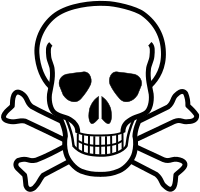Brigstock Weaver
Brigstock Weaver (born 1686 – died 1767) (fl. 1720-1725, first name occasionally Bridstock) was an English pirate active in the Caribbean. He is best known for his association with fellow pirates Thomas Anstis and Bartholomew Roberts.
History
Weaver had been first mate of the Mary and Martha when they were captured near Saint Kitts in 1720 by Barthololomew Roberts and Montigny la Palisse, who burned the ship and forced the crew to sign their Articles.[1] Roberts took several more vessels, keeping the best of them for himself and placing Thomas Anstis in command of his previous ship Good Fortune. Weaver joined Anstis as first mate.[1]
In April 1721 Anstis broke off from Roberts and took the Good Fortune with him. Soon after Anstis captured the Morning Star, fitting it out as his own ship[lower-alpha 1] and forcing Weaver to command the Good Fortune.[3] Weaver continued piracy on his own throughout 1722, looting over fifty ships from the Caribbean to Newfoundland.[2]
He met Anstis again while careening their vessels in 1723 when they were caught while ashore by a pirate-hunting warship.[3] After the Morning Star ran ashore and was wrecked they scattered, while Fenn took command of the Good Fortune from Weaver and used it to escape. Many of the pirates were captured but Weaver and a few others fled into the woods; soldiers found Anstis dead, murdered by his own disgruntled crew.[3]
Weaver made his way back to Bristol, England aboard a logwood hauler. He was “in a very ragged condition” and petitioned for help from an old acquaintance, who gave him a room and a little money.[4] He bought new clothes and walked freely around town until by chance he met the captain of a ship he’d helped raid while serving under Anstis.[4] The captain offered to let Weaver go if he could replace the liquor he’d stolen off the captured ship. Weaver failed to do so; he was jailed, tried in London for piracy in May 1725, and sentenced to hang.[5]
William Ingram and other crew who’d served with Anstis willingly were executed.[5] Weaver’s own testimony minimized his role in piracy and emphasized the fact that he had been forced aboard.[1] Some crewmen such as the ship’s doctor William Parker (who had also been captured and forced aboard) confirmed his story[6] and in June 1725 the Admiralty Court pardoned Weaver.[5]
See also
- John Gow, another pirate tried at the same time as Weaver.
Notes
References
- 1 2 3 Fox, E. T. (2014). Pirates in Their Own Words. Raleigh NC: Lulu.com. ISBN 9781291943993. Retrieved 17 June 2017.
- 1 2 Gosse, Philip (1924). The Pirates' Who's Who by Philip Gosse. New York: Burt Franklin. Retrieved 23 June 2017.
- 1 2 3 Horwood, Harold (2011). Plunder & Pillage: Atlantic Canada's Brutal and Bloodthirsty Pirates and Privateers. Halifax NS: Formac Publishing Company Limited. ISBN 9780887809491. Retrieved 7 July 2017.
- 1 2 Johnson, Captain Charles (1743). A General and True History of the Lives and Actions of the most Famous Highwaymen, Murderers, Street-Robbers, &c... London: R. Walker. pp. 359–360. Retrieved 7 July 2017.
- 1 2 3 The Historical Register. London: H.B. Meere. 1725. pp. 23, 30. Retrieved 7 July 2017.
- ↑ "The Pirate Surgeon's Journal: Golden Age of Piracy History of Pirate Surgeons Page 9". www.piratesurgeon.com. Retrieved 7 July 2017.
